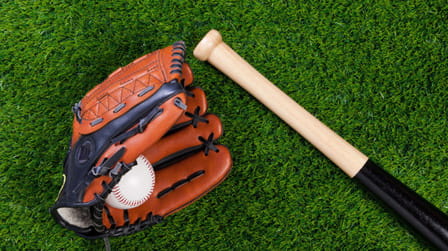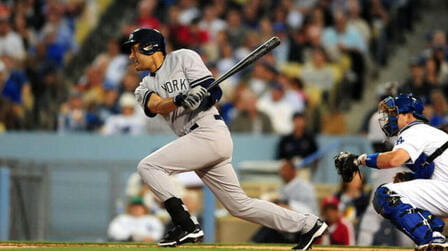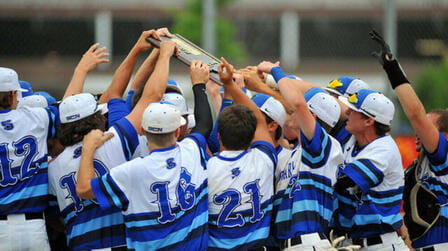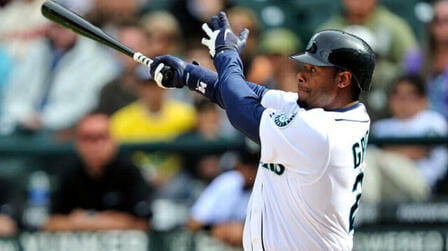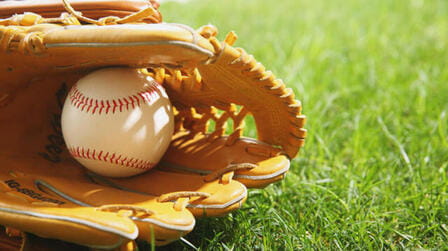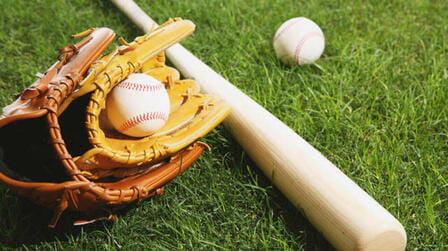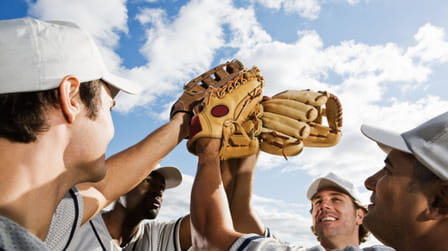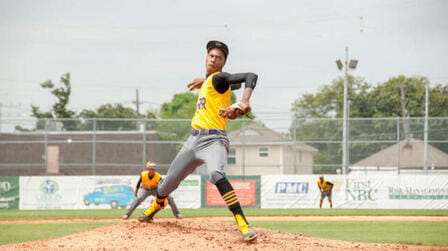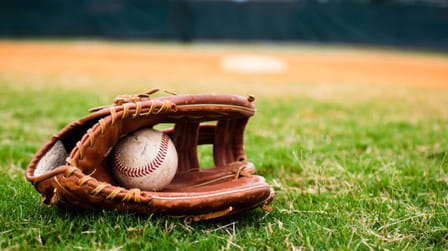Major League Baseball (MLB) teams have a variety of uniforms to choose from for each game. Deciding which uniform to wear involves the starting pitcher, manager, MLB league office, and considerations like tradition, team colors, comfort, style, weather, TV, and merchandising.
In Major League Baseball, several parties are involved in determining which uniform a team will wear for any given game. Here is an overview of who typically decides on the uniform selection in MLB:
The Starting Pitcher
One of the most common practices in baseball is for the starting pitcher to choose which uniform the team will wear for that game. This tradition dates back to the early 20th century when pitchers were also appointed team captains and given the responsibility of being team leaders.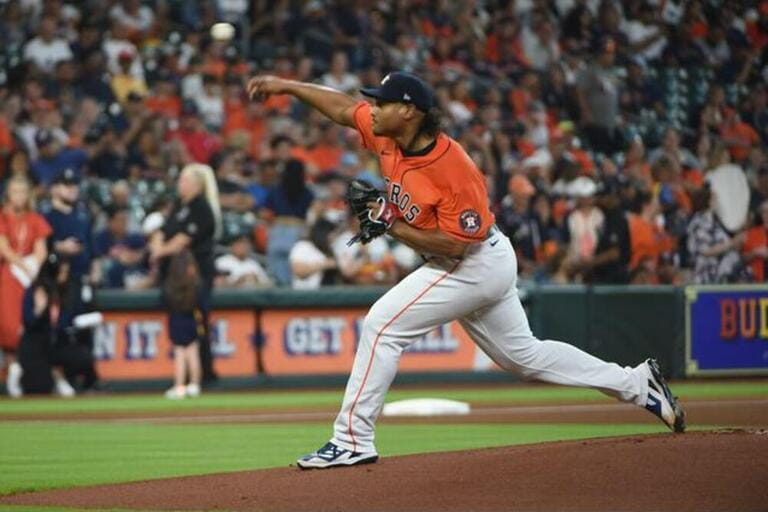
Even after the role of official team captain was phased out, starting pitchers continued to be given the privilege of deciding on the uniform for their starts. Since the pitcher is the most involved player in the game, it is seen as a way to give them some control and input over the conditions.
Pitchers will often choose uniforms based on superstition, comfort, or to gain any small advantage or psychological edge. For example, a pitcher may prefer to wear gray uniforms when pitching on the road or choose white for home day games to reflect sunlight and keep cool.
The Manager
If the starting pitcher defers the decision or there is not a clear preference, the manager will make the final call on which uniform the team will wear.
The manager may consult with the pitcher, other players, or coaches, but ultimately the manager has the authority to choose the uniform if the starter does not have a strong opinion. The manager may also factor in additional considerations like special events, holidays, team performance in certain uniforms, etc.
Managers also have the ability to designate which uniform the starting pitcher must wear, overriding their preference in certain situations. However, this is less common as most managers allow their pitchers to have the choice.
Major League Baseball
While individual pitchers and managers have control over day-to-day uniform selection, Major League Baseball still has some overarching rules that limit their options.
For most games, MLB requires the home team to wear their designated home white uniforms and the away team to wear their gray or colored road uniforms. This is to provide consistency and prevent confusion.
MLB also designates special event games such as holidays, anniversaries, or the All-Star Game where teams are required to wear specific alternate or throwback uniforms that are different from the normal home and away. Both managers must adhere to these uniform guidelines.
Other Influences
In addition to the pitcher, manager, and MLB, there are other influences that may sway uniform selection including:
- Team Traditions: Historical franchise preferences like the Yankees always wearing pinstripes.
- Player Superstitions: Individual players believing certain uniforms bring good luck.
- Weather Conditions: Lighter or darker colors depending on sun, heat, cold, etc.
- Roster Considerations: Promotions, trades, injuries, etc. that affect who is on the active roster.
- Merchandising: Wearing popular or best-selling jerseys to boost merchandise sales.
How MLB Teams Choose Their Uniforms
MLB teams put a significant amount of thought, design, and planning into developing their uniform options. Here are some factors teams consider when conceiving and adding uniforms:
Team Identity and Branding
The uniforms are a vital part of establishing a team's image and brand identity. Colors, logos, name fonts, number styles, and overall uniform design allow teams to represent their history, location, and persona. Legacy franchises often have classic, traditional looks while newer teams may aim for a more modern identity.
Honoring Team History and Traditions
Incorporating historical elements allows teams to pay tribute to past eras and player greats who wore iconic uniforms. Throwback and retro uniforms are a way to establish continuity and invoke nostalgia among long-time fans.
Fan Preferences and Marketing Potential
Teams invest heavily in understanding fan opinions and merchandise purchasing tendencies. Uniforms deemed popular among fans in surveys and focus groups or those expected to have strong retail sales will be given priority.
Player Comfort and Performance
Advances in athletic apparel and fabrics allow for better moisture-wicking, cooling, and less skin irritation for players. Teams also study which colors and designs give players the best visibility of the ball in play.
Coordination with Other Teams
MLB has guidelines on home vs. away as well as avoiding direct conflicts between opponents' uniform colors during the same game. This is done through official approval processes.
Special Events, Holidays, and Anniversaries
Alternate "themed" uniforms allow teams to commemorate events, cultural heritage, holidays, city history, or past championship seasons. These help drive interest, merchandise sales, and goodwill with fans.
Key Considerations in MLB Uniform Selection
There are several important factors teams weigh when choosing game uniforms:
Team Colors
The primary team colors should be prominently featured. For example, Red Sox uniforms will primarily utilize red and blue. This reinforces the brand.
Home vs. Road Distinction
Teams must have distinct home and away uniforms so it's clear for fans and media which is the home team. Typically home uniforms are white and road are gray or colored.
Number Visibility
Uniform numbers must be clearly visible from a distance so umpires, scouts, media, and fans can easily identify players.
Player Comfort
Materials and fit need to account for athletic performance and motion as well as addressing issues like managing moisture, heat, and chafing for optimal comfort.
Appearance and Style
Uniforms are a matter of personal pride and reputation for players. Although functional, they want uniforms that also look sharp and stylish on the field.
Tradition vs. Innovation
Teams aim to balance historical continuity by keeping classic uniform elements with periodically modernizing fabrics and injecting creative new options.
Merchandise Potential
Teams design uniforms that resonate with fans and are likely to be purchased as replica jerseys, t-shirts, and hats to drive lucrative merchandising revenue.
Key Roles in the MLB Uniform Selection Process
Several key groups are involved in researching, designing, approving, and selecting MLB uniforms:
Uniform Suppliers
Companies like Nike, Under Armour, Majestic, New Era design and develop new uniform and apparel prototypes and samples for MLB teams.
Team Equipment Managers
Equipment managers handle uniform ordering, inventory, custom alterations, and coordinate team feedback on comfort, quality, fit, etc. to suppliers.
Team Marketing and Merchandising Departments
Responsible for gauging fan preferences through surveys and focus groups as well as analyzing retail market potential of uniform designs.
Team Management and Ownership
GMs, team presidents, and owners have final say over significant uniform redesigns and branding decisions based on recommendations and financial considerations.
MLB League Office
The Commissioner's office reviews and approves uniform designs, ensures branding guidelines are followed, and designates special event uniforms across the league.
Players
Although they don't control decisions, player opinions on comfort, style, and performance influence uniform selection and redesign processes.
The Evolution of MLB Uniforms
MLB uniforms have undergone gradual but significant change over 150+ years of baseball history. Here are some key developments:
Late 1800s: Wool and Minimal Design
Early uniforms were very simple, often just a basic t-shirt, long pants, and cap made of wool. Teams distinguished themselves through the cap insignia and by wearing solid colors of gray, black, brown, or white.
Turn of the Century: Pinstripes and Plaids
Around 1900, teams added vertical pinstripes, plaids, and basic logos to uniforms. Home and away distinctions also began emerging with white for home games and gray for the road. The New York Yankees adopted their famous pinstripe look in 1912.
1930s: Numbers and Patches Added
In 1929, numbers first appeared on the back of uniforms so players could be identified from the stands. Team mascots and logos also began to appear on sleeves, shoulders, and caps during the 1930s.
1970s: Synthetics, Colors, and Style
Double knits, stretchy synthetics, simulated stirrups, and bright color schemes reflected 1970s design trends. Teams also began using multiple jersey and pant combinations including power blues.
1990s: Retro Designs Return
In the late 1990s and 2000s, retro themes highlighting past heritage became popular. Pinstripes, flannel, classic logos, and rich creams and olives were in vogue again.
Today: Flexibility and Variety
New fabrics provide better performance and comfort. Teams now have multiple jerseys, alternate logos, special event designs, throwbacks, and options to mix-and-match.
Key Recent MLB Uniform Trends
Some emerging trends reshaping MLB uniforms today include:
- Extended use of alternate home and road options beyond just special occasions
- Vintage inspired designs have shifted from retro to more modern adaptations of classic looks
- Increased uniform options and combinations for home, road, alternates, throwbacks
- Bolder experimentation with colors, piping, color gradients, metallic accents
- More uniforms designed specifically with performance attributes tailored to player positions
- Looser, more athletic fit through the jersey, pants, and base layer components
- Continued emphasis on representing local culture and heritage through uniforms
- Allowing players more personalized options for things like custom accessories, batting gloves, shoes, etc.
Why Uniforms Matter in Baseball
Uniforms play an important role in baseball due to:
- Identity and brand: Uniforms are a key way teams establish their brand image and connect with fans. The Yankees' pinstripes, the Dodgers' blue and white, the A's green and gold uniforms instantly identify those franchises.
- Tradition: MLB has a long history and tradition. Uniforms invoke nostalgia and let new eras honor past generations of players.
- Pride and team unity: Uniforms unite players as members of the same squad. Players take pride in wearing their team colors and representing cities and fan bases.
- Merchandising: For teams and MLB, branded apparel is big business. Having diverse popular uniform designs across the league helps drive billions in licensed merchandise sales.
- Player comfort: Performance attributes of today's fabrics, ventilation, and athletic fit help players feel their best physically. Uniforms are "equipment" too.
- Distinguishing competitors: Fans and players need to immediately distinguish opponents. Uniforms being consistent home and away prevents confusion on the field.
- Fashion: While practical, uniforms are also visual statements. Players want to look good taking pride in being part of a well-dressed team.
Conclusion
In summary, while starting pitchers and managers have input into choosing MLB uniforms for each game, league regulations, team traditions, player preferences, and marketing concerns all influence the decision. Millions of fans watch games in-person and on TV each season, so uniforms play a big role representing teams as iconic brands. The decision involves weighing history, performance, and visual identity. With over a century of evolving yet timeless uniform styles, baseball continues to be a sport where uniforms matter.
